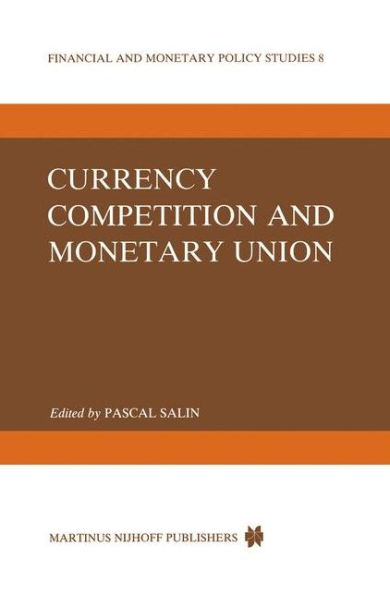Currency Competition and Monetary Union
Pascal Salin Many of the texts which have been used for the present book were presented as papers at a conference organized in Brussels by Michiel van Notten for the 1 Institutum Europaeum in December 1980on the subject of European Monetary Union and Currency Competition. However, this book is more than the mere proceedings of a conference. It aims at presenting the reader with an homogenous text, not a patchwork of papers, in spite of the large number of contributors. Though it would be absurd to pretend that these contributors -some of whom are prominent thinkers - agree on everything, their dissenting opinions do not go beyond the usual qualifications one may find in a book of which the final direction is quite clear, but where the requirement of intellectual strictness leads to the analysis of both the pros and the cons of a problem. It may also seem to some that this book deals with two different subjects, currency competition and monetary union, which have been joined together more or less randomly. We believe, however, that this impression will be dis pelled as soon as they commence reading. Both sections of the book deal with one and the same topic: the optimal organization of a monetary system. Present efforts to achieve European monetary unification all suffer from the same preju dices with respect to the organization of the monetary systems within each country and within the world as a whole.
1101630725
Currency Competition and Monetary Union
Pascal Salin Many of the texts which have been used for the present book were presented as papers at a conference organized in Brussels by Michiel van Notten for the 1 Institutum Europaeum in December 1980on the subject of European Monetary Union and Currency Competition. However, this book is more than the mere proceedings of a conference. It aims at presenting the reader with an homogenous text, not a patchwork of papers, in spite of the large number of contributors. Though it would be absurd to pretend that these contributors -some of whom are prominent thinkers - agree on everything, their dissenting opinions do not go beyond the usual qualifications one may find in a book of which the final direction is quite clear, but where the requirement of intellectual strictness leads to the analysis of both the pros and the cons of a problem. It may also seem to some that this book deals with two different subjects, currency competition and monetary union, which have been joined together more or less randomly. We believe, however, that this impression will be dis pelled as soon as they commence reading. Both sections of the book deal with one and the same topic: the optimal organization of a monetary system. Present efforts to achieve European monetary unification all suffer from the same preju dices with respect to the organization of the monetary systems within each country and within the world as a whole.
219.99
In Stock
5
1

Currency Competition and Monetary Union
298
Currency Competition and Monetary Union
298Hardcover(1984)
$219.99
219.99
In Stock

Product Details
| ISBN-13: | 9789024728176 |
|---|---|
| Publisher: | Springer Netherlands |
| Publication date: | 05/31/1984 |
| Series: | Financial and Monetary Policy Studies , #8 |
| Edition description: | 1984 |
| Pages: | 298 |
| Product dimensions: | 6.10(w) x 9.25(h) x 0.03(d) |
From the B&N Reads Blog
